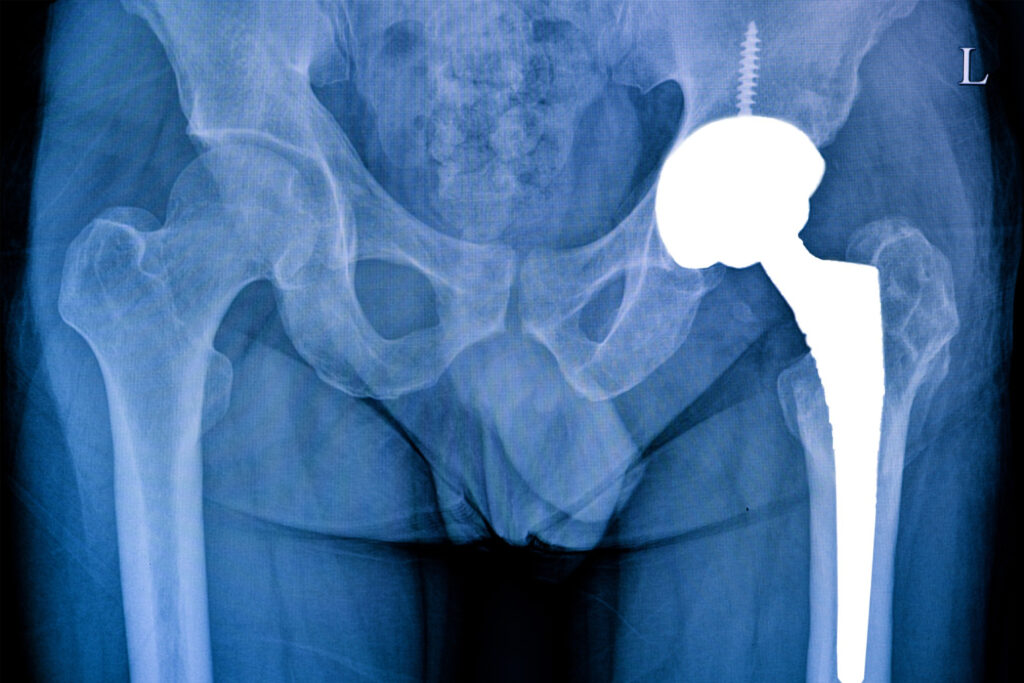Hip replacement surgery: All you need to know
Hip replacement surgery (hip arthroplasty) involves removing a damaged or diseased hip joint and replacing it with an artificial implant. This surgery reduces pain and improves mobility in patients with lingering symptoms of hip osteoarthritis. The most common type of this surgery is a total hip replacement, in which the acetabulum (hip socket) and the head of the femur (the “ball” of the hip joint) is replaced.
What is Hip Replacement Surgery?
A hip replacement surgery is usually successful with reliable results. The new hip performs the same function as the normal hip and significantly improves the quality of life. With a total hip replacement, part of the pelvis and the head of the femur are completely removed. They are replaced by similar-looking implants. That is, a cup serving as a socket and a ball serving as a femoral head. A metal rod is inserted into the femur to help secure the new head.
The surgery is called a partial hip replacement (hemiarthroplasty) when a prosthesis replaces only the femoral head.
Hip replacement is performed by an orthopaedic surgeon.
Various hip replacement surgery techniques
There are some variations on how a surgeon can perform hip replacement surgery:
Posterior approach:
This is the most commonly used method. You are operated on lying on your side while an incision is made near your buttocks, on the outside of the hip. The muscle is cut to reach the hip joint.
A lateral approach:
This is essentially the same as the posterior approach. Except the incision is made closer to the front of the body (rather than the buttocks), outside of the hip.
Direct anterior approach:
You lie on your back and the incision is made on the front side of the thigh. This is sometimes called muscle-sparing hip replacement because the surgeon bypasses (instead of cutting) the muscle to reach the hip joint.
Purpose of Hip Replacement Surgery
Hip replacement is recommended in cases where the hip joint has been compromised due to the following:
- Osteoarthritis of the hip
- Rheumatoid arthritis
- Injury/fracture
- Hip osteonecrosis: When blood flow to a bone is reduced and bone tissue dies as a result.8
The damaged or diseased parts of the hip joint are replaced to:
- Reduce persistent hip pain
- Improve joint mobility
- Restore confidence and ease of movement for a better quality of life
How to prepare for hip replacement surgery
Preparation for the surgery begins weeks before your procedure and involves both getting your body ready for the surgery and recovery from it. Among some of the suggestions your healthcare provider may give you:
- Try to lose weight and quit smoking, if applicable, to reduce your risk of complications.
- Stay active and perform any exercises suggested by your healthcare provider to build strength.
- Set up help for household chores, like grocery runs, meal making, and cleaning.
- Make sure your house will be as safe and accessible as possible for you as you heal. For example, move commonly-used items to easy-to-reach areas, clear clutter, consider getting a raised toilet seat, and so on.
- Secure recommended mobility aids, like a cane or crutches.
Post-procedure care
You may feel like your new hip gives you a new lease on life. As you enjoy days with less pain and more ease of movement, remember to take steps to protect the integrity of your replacement and reduce the risk of injury. The National Institute of Arthritis and Musculoskeletal and Skin Diseases offers many suggestions to help you with this, including:
- Avoiding high-impact activities, like jogging and basketball
- Engaging in healthcare provider-approved exercise that can keep your muscle strength and overall fitness up
- Wearing supportive shoes with no-slip bottoms
- Ridding your home of tripping hazards
- Make sure all areas of your home are well-lit and have handrails and grab bars, where appropriate

